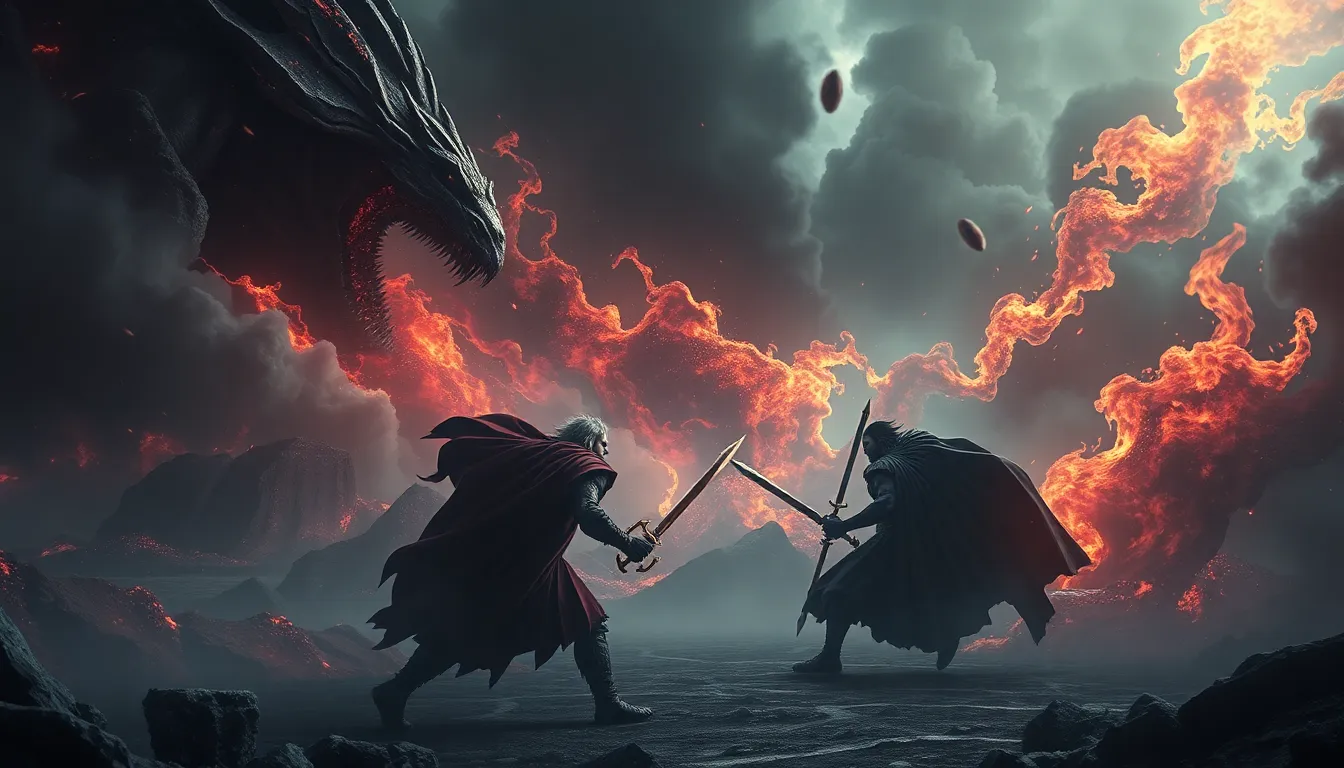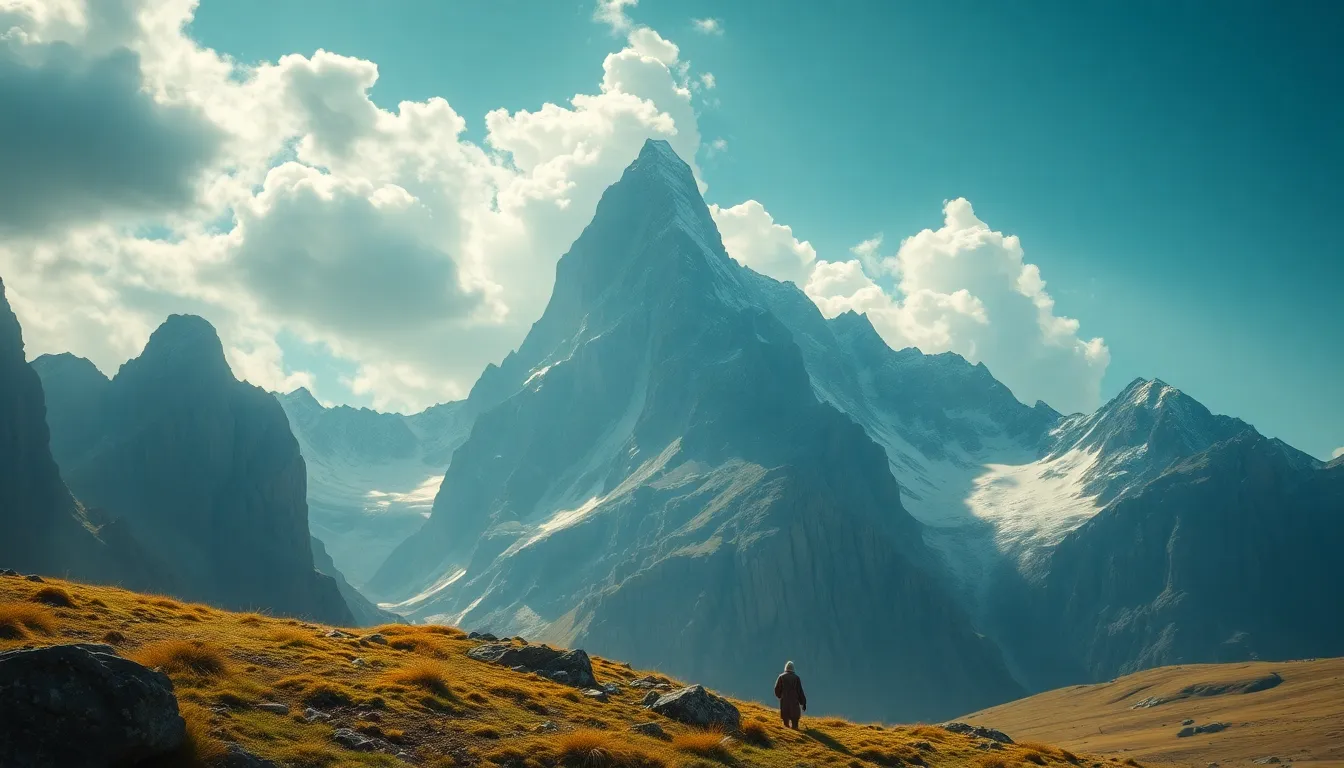The Most Iconic Legends of Ancient Deities and Their Symbolism
Introduction to Ancient Deities
Throughout history, ancient cultures have revered a multitude of deities, each embodying various aspects of life, nature, and human experience. These deities served as a bridge between the mortal realm and the divine, providing guidance, comfort, and explanations for the mysteries of existence. Their significance is profound, as they not only shaped the religious beliefs of civilizations but also influenced societal values, moral codes, and cultural practices.
Legends surrounding these deities played a crucial role in shaping the collective identity of societies. They conveyed essential life lessons, celebrated human virtues, and offered explanations for natural phenomena. By understanding these stories, we gain insight into the worldviews and priorities of ancient peoples.
The Pantheon of Ancient Egypt: Osiris, Isis, and Horus
The ancient Egyptian pantheon is rich with gods and goddesses who oversaw various aspects of life and death. Among the most prominent are Osiris, Isis, and their son Horus, who symbolize the cycle of life, death, and resurrection.
The legend of Osiris tells the story of his murder by his brother Set, who was driven by jealousy. After his death, Osiris was resurrected by his wife, Isis, symbolizing hope and the possibility of life after death. This myth not only reinforced the importance of family and loyalty but also established the foundation for the Egyptian belief in the afterlife.
- Symbolism of life: Osiris represents fertility and regeneration.
- Symbolism of death: His death signifies the inevitability of mortality.
- Symbolism of rebirth: His resurrection embodies the hope of immortality.
Greek Mythology: Zeus and the Olympian Gods
Greek mythology is replete with a pantheon of deities, the most notable being Zeus, the king of the gods. He ruled over Mount Olympus and was revered for his authority and justice.
The legend of Zeus encompasses his rise to power, his battles against the Titans, and his establishment of order among the gods. He is often depicted wielding a thunderbolt, symbolizing his control over the sky and his role as a protector of humanity and enforcer of law.
- Symbolism of power: Zeus represents ultimate authority and leadership.
- Symbolism of justice: He embodies the enforcement of moral order.
- Symbolism of order: His governance ensures balance among gods and humans.
Norse Legends: Odin, Thor, and the Aesir
Norse mythology presents a complex cosmology where the Aesir, a group of deities including Odin and Thor, play significant roles in the lives of the Norse people. Odin, the Allfather, is a god of wisdom and war, known for his relentless pursuit of knowledge.
The legend of Odin highlights his willingness to sacrifice himself for wisdom, famously hanging on the World Tree, Yggdrasil, for nine days and nights. This act reflects the Norse values of bravery and the acceptance of fate.
- Symbolism of bravery: Odin’s sacrifices exemplify courage in the face of adversity.
- Symbolism of fate: His knowledge of destiny emphasizes the inevitability of life’s outcomes.
- Symbolism of the warrior ethos: Valhalla, where slain warriors reside, illustrates the honor of valor in battle.
Hindu Deities: Vishnu, Shiva, and the Cycle of Creation
Hinduism encompasses a rich tapestry of deities, with Vishnu and Shiva being central figures. Vishnu is known as the preserver of the universe, who incarnates in various avatars to restore cosmic order.
The legend of Vishnu illustrates his role in the eternal cycle of creation, preservation, and destruction. His avatars, such as Rama and Krishna, embody different aspects of life and morality, teaching profound lessons to humanity.
- Symbolism of creation: Vishnu’s role as the preserver emphasizes the importance of nurturing life.
- Symbolism of preservation: His avatars represent the balance of duty and righteousness.
- Symbolism of destruction: Shiva, as the destroyer, signifies the necessity of transformation for renewal.
Mesoamerican Deities: Quetzalcoatl and Tezcatlipoca
Mesoamerican mythology features a diverse array of deities, with Quetzalcoatl and Tezcatlipoca being among the most revered. Quetzalcoatl, the feathered serpent, is often considered a cultural hero who brought knowledge and civilization to humanity.
The legend of Quetzalcoatl highlights themes of creation and duality, portraying him as a benevolent force that contrasts with the darker aspects represented by Tezcatlipoca, the god of night and chaos. Together, they symbolize the balance of opposing forces in the universe.
- Symbolism of duality: The interplay between Quetzalcoatl and Tezcatlipoca reflects the balance of good and evil.
- Symbolism of balance: Their legends convey the importance of harmony in life.
- Symbolism of the natural world: Both deities are deeply connected to nature and its cycles.
African Mythology: Anansi and the Spider Tales
In African folklore, trickster figures like Anansi serve as important cultural symbols. Anansi, often depicted as a spider, is known for his cleverness and ability to outsmart others.
The legend of Anansi encompasses stories that impart moral lessons, often through humor and wit. His adventures reflect the complexities of human nature, teaching the value of intelligence and resourcefulness in overcoming challenges.
- Symbolism of cunning: Anansi’s cleverness illustrates the power of intellect over brute strength.
- Symbolism of intelligence: His stories encourage creative problem-solving.
- Symbolism of cultural identity: Anansi embodies the rich storytelling tradition of African cultures.
Indigenous Deities: The Great Spirit and Nature Spirits
Indigenous beliefs often emphasize a deep connection to nature, with deities like the Great Spirit representing the unity of all life. These beliefs highlight the sacredness of the natural world and humanity’s role within it.
The legends of the Great Spirit emphasize themes of interconnectedness and harmony, teaching that all living things are part of a greater whole. This spiritual perspective fosters respect for nature and promotes sustainability.
- Symbolism of harmony: The Great Spirit embodies balance within the natural order.
- Symbolism of respect for nature: Indigenous beliefs encourage stewardship of the earth.
- Symbolism of spirituality: Nature spirits signify the sacredness of life in all its forms.
The Enduring Legacy of Ancient Legends in Modern Culture
Ancient deities and their legends continue to influence contemporary literature, art, and culture. From modern adaptations of myths in films and novels to the resurgence of interest in mythology and folklore, these stories remain relevant.
Today, the symbolism embedded in these ancient tales resonates with modern audiences, offering insights into human nature, morality, and the complexities of existence. As people seek meaning in an increasingly complex world, the lessons of ancient deities provide timeless guidance.
![]()



